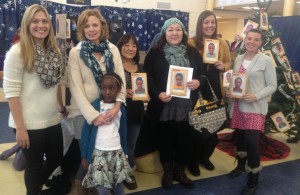I first discovered the beauty and vast scope of God’s world through short-term mission trips. For me, interacting with another culture on an overseas trip to the Philippines with my youth group was a critical moment not only in my own discipleship, but more specifically in shaping my life purpose toward holistic development.
Of course, thinking about my early travels in hindsight has given me a different perspective on why I went, what was accomplished, and whether I could have done some things differently.
I have realized that I got more out of the short-term team experience than I contributed, and not in the cheesy way that most of us first say it when we return from a trip (“I blessed them, but I’m really the one who’s blessed!”). Yes, I had benefited, but possibly at the expense of those whom I thought I was serving. My team required a lot of time and focus from our hosts, who were already overwhelmed with their ministry responsibilities. But I’m not sure that we furthered their ministry goals at all.
In When Helping Hurts, my friends Steve Corbett and Brian Fikkert liken the relationship between Western visitors and majority world communities to a dance between an elephant and a mouse. I’ll let you guess which partner is the elephant.
Given my early missteps with short-term missions, you might be surprised to hear that I believe in them. Working at Food for the Hungry, where we stick to the best, most sustainable development practices, I’ve watched dozens of communities benefit (yes, truly benefit) from teams who have visited from the U.S. We measure this success not by the enthusiasm of the American team members, but by the transformation that our local, indigenous staff gauge on the field level. Over and over, we are seeing that our short-term missions inspire hope in the community, encourage the local church, and help to move forward the development goals that community members have set for themselves.
But success on mission trips doesn’t just happen. We’ve identified a critical mix of elements necessary for short-term teams. They include community-initiated projects, working alongside community members (everyone contributes!), rigorous screening and training of team members, and a long-term, sustainability-focused program that is much broader than the team’s visit. (There are other important factors, too. Check out the Standards of Excellence in Short-term Mission.)
Today on the Food for the Hungry blog, I wrote about the physical projects that short-term teams work on. One big criticism I’ve heard of short-term missions has been that just the cost of the team getting to the field location could pay for bigger and better projects in needy communities. Today’s post is an attempt to show why such thinking doesn’t consider the whole picture. Check it out on the FH website.
There’s so much to say about short-term missions and how to optimize their benefit. I’d like to write more about this topic. Specifically, what would you like to hear more about? Let me know in the comments or via the contact form.





